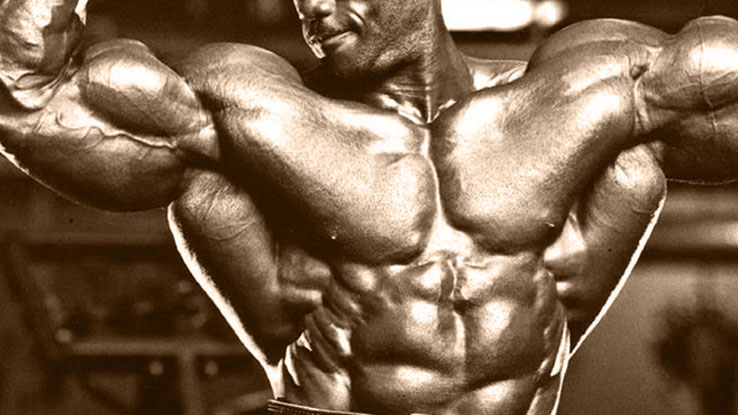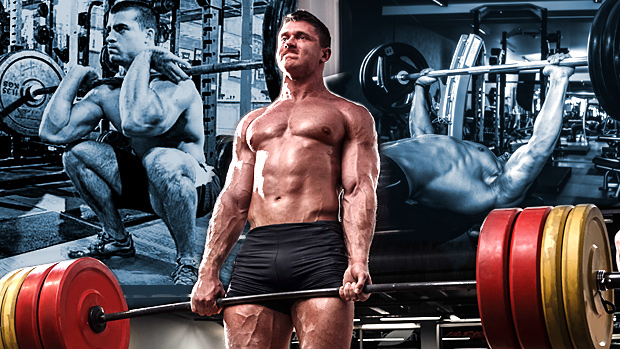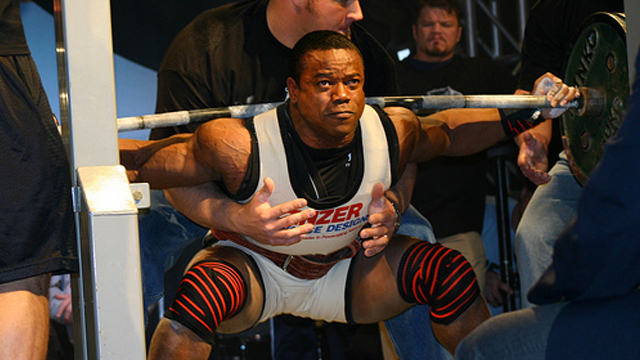Nowadays, innovative seems to mean ineffective. Online strength "sages" come up with fifty new variations to exercises each day that have no real sustainability or usefulness in a program. Basic movements that built powerful men for decades have seemingly been abandoned for unnecessary discussion of minutiae.
I'm tired of people who aren't noticeably physically dominant trying to teach others how to be big and strong. I'd rather hear from guys like Jim Wendler and Dave Tate, who truly know what it feels like to walk into a room and know they're the strongest and "hardest to kill."
While it would be ignorant not to pay attention to research, it's just as ignorant not to pay attention to the anecdotal evidence of great strength athletes and strength coaches who've been there and successfully coached breathing human beings to be big and strong, again and again.
I can attest that you learn real quick what works and what doesn't when your job security is dependent on whether you keep athletes safe while making them bigger, stronger, and faster.
The following 7 movements are what I've learned from great college and NFL strength and conditioning coaches who fit that bill. These exercises are the staples I've used for putting muscle on D1 college athletes of all body types as well as myself for years.
Board presses are great for developing lockout strength in the bench press but also for building big shoulders and triceps, but subtracting a board each set makes it even better.
- Start with 3 boards and do a heavy set of 5 reps. Use an appreciable load but pick a weight that you could hypothetically do 2 more reps if you really grinded.
- Rest for 45-60 seconds, take a board off, and subtract 5-15 pounds before doing 5 more reps.
- Repeat, subtracting a board every time until you have no boards. Then do one more set coming all the way down to your chest.
Your first set uses the heaviest weight because you have the greatest mechanical advantage and the weight decreases as your ROM increases.
Regardless of your view on shoulder health, the overhead press is one of the best ways to build big shoulders. The added dip and hip drive of the push press allows more weight to be lifted with a little less grinding of the shoulders, which is always a good thing for a competitive athlete or lifter.
The push press, while usually labeled a lift to develop strength, is also great for hypertrophy.
Considerations:
- As you dip into a quarter squat, shift your weight back and then thrust the weight overhead. Try to lock out your elbows right after or at the same time you extend your hips and knees.
- As the bar clears your chin, shift your weight forward and underneath the bar, pushing your head through at the top to ensure the bar is over your ears and subsequently your center of gravity.
- Tense your entire body and squeeze the bar hard (flexing your triceps) at the top to involve more muscles and stimulate greater muscle growth. Hold it in this position at the top for 1.5- 2 seconds.
Usually thought of as progression for teaching the clean, power shrugs are also a great way to get those traps and upper back you've always wanted...if done correctly. I prefer these for building that "big yoke" over strict shrugs because you can load the bar with much more weight. The added weight and full body movement builds a bigger upper back.
Considerations:
- Make sure you extend your hips at the top and squeeze your shoulders up and back in one fluid movement. No need to come up on your toes, just thrust your hips through explosively.
- Place the weight down on the boxes between every rep but only for a moment, enough time for you to reset for the next rep. I've found not doing this throws lifters out of position and reduces the effectiveness.
Building impressive hamstrings and glutes seems to elude many lifters and athletes. Maybe it's because they'll do hamstring curls until their knees fall off but still refuse to do a heavy RDL or hip thrusters. One of my favorite movements to build that impressive posterior chain is the band resisted RDL. Standing on a band makes the top part of the extension more difficult and really challenges the hip extensors in a unique way.
I've logged more hours in a weight room than I care to recall and I've yet to find any single-joint quad-dominant exercise or lift that builds big quads like a good old front squat. In fact, every time I get away from them, my legs start to look small.
Adding a box adds a different component as it helps eliminate the elastic bounce you get from the stretch-shortening cycle and allows for a more powerful muscular contraction. Make sure you sit for a full second but keep tension at the bottom, and don't rock back excessively. I also like the box front squat because it's a lift you can use both as a strength lift and, in this case, an assistant lift to build mass.
There have been entire books written about knee and hip angle in the walking lunge. So much has been written that people are now scared of doing them for fear that their knee won't track over their toes correctly, causing us to seemingly lose the war on terror.
I like the reverse lunge because it's actually a regression of the forward walking lunge and can be performed with more ease and therefore loaded heavier. An athlete or lifter can get in a better lunge position and the added push back of the front leg is great for increased muscle activation.
I guess it's cool to do 100 steps of walking lunges in a row, but I'd rather just hold on to heavier dumbbells (which is of course great grip work to build bigger forearms) and limit the reps to 4-6 per leg. I've found this method builds bigger legs anyway, as long as you do enough sets and keep the rest periods relatively low.
We all know that face pulls can be a great corrective exercise when emphasizing slow contraction during scapular retraction.
Here's my question – once we have normal scapula-humeral rhythm, why not add more weight and use it to build a big upper back? Face pulls are a great tool to do just that and one that I've seen put more muscle on an upper back than just about anything else.
Considerations:
- You can lean back some from the start to brace yourself with the heavier load, but don't excessively flex and extend your lower back as you pull.
- Forget high reps and pull some weight for sets of 5-6 reps.
Before I set you free to go massively over-train, please remember that these are big, compound movements that cause lots of fatigue. Because of this, doing high-rep sets is not advised.
To build muscle you need muscle-depleting volume and you need tension. For these purposes, this means doing relatively low reps – 5 to 6 – while keeping the sets moderately high and only resting 45-60 seconds between.
Not that high rep training doesn't have its place for some lifters, but with big movements likes these, keeping the reps low and pushing the weight is better.
Although these movements need to be seen as assistance work to your main lifts that are your primary developers of strength in your program (squat, press, and pull movements), they're still great additions to any program to pack on extra muscle.
I say it's high time we establish a new law – no strength coach or "expert" can write about or market their "cutting edge" methods to build size and strength without first producing verifiable evidence that they've accomplished this in the past, both with themselves and especially with clients.
Were this law to come into effect, I can guarantee two things: you'd have a hell of a lot fewer coaches writing about strength and mass development, and the ones that do would have programs built around basic, heavy, no-nonsense work.





